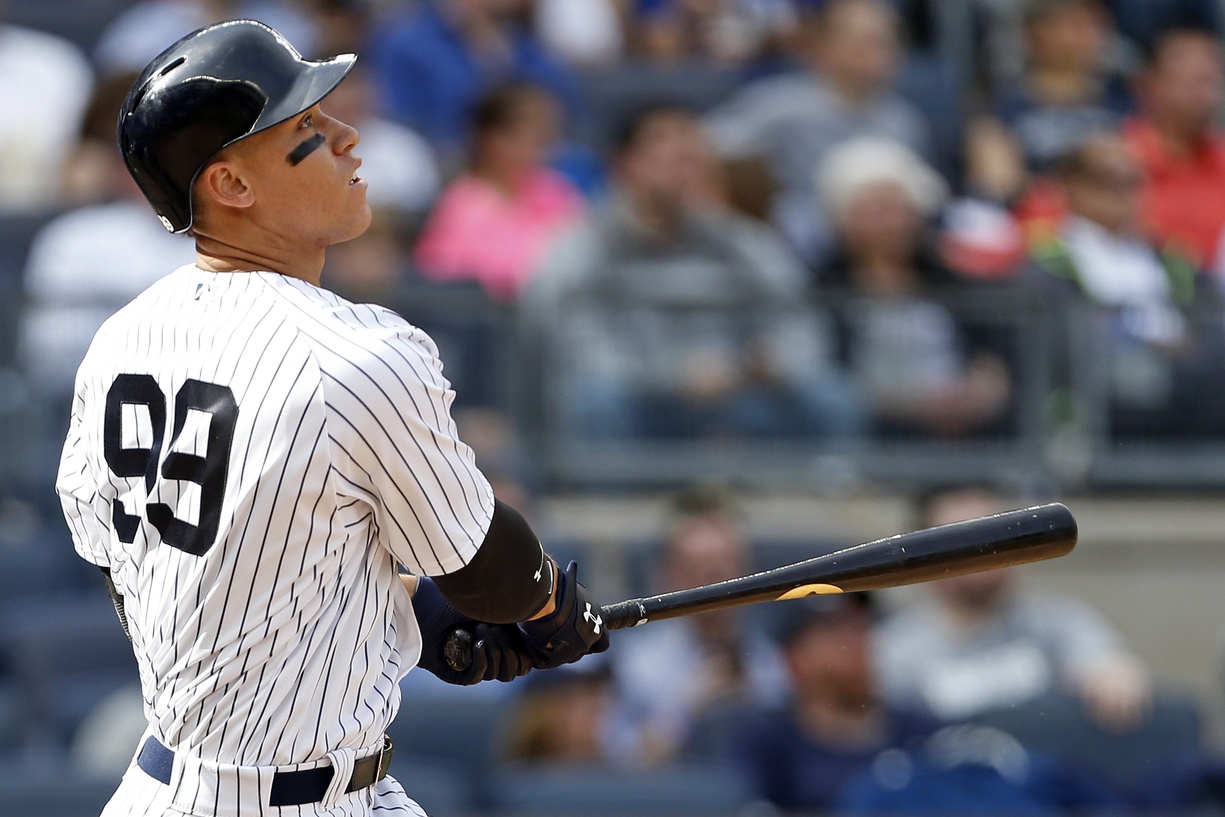Look, you know the drill by now. Every baseball article you’ve read for the past week and a half has given you the rundown on small sample sizes and stabilization rates and blah, blah, blah. Things are happening though! Baseball games finally count again! Real dingers are being hit and real stats are being compiled. If you’re reading Baseball Prospectus, it’s probably safe to assume you’re someone who wants to know what those stats mean. Repeatedly being told that they’re useless so early in the season can be a drag. As long as it’s April though, baseball writers have to do it. It’s the law.
One of the few areas where we actually can begin to notice meaningful change early on is contact rate. According to research done by BP’s Russell Carleton, swing and contact percentage are among the very first statistics to stabilize, taking fewer than 40 plate appearances to do so. As luck would have it, the Yankees have a player whose contact prowess was of the utmost importance entering 2017, and that same player also happens to be hitting the cover off the ball through the season’s first eight games.
Aaron Judge will enter Thursday with a .308/.379/.692 batting line and three-game homer streak. The power shouldn’t come as a surprise to anyone — we’ve known that it’s real as long as we’ve known about Judge. The question as to whether the 25-year-old could stick as a big-league regular has always hinged on his ability to make enough contact to let that power shine. Those questions only got louder and more distressed after a 27-game major league stint last summer that saw him hit .179/.263/.345 and strike out in 44 percent of his plate appearances.
Judge made less contact than any player in baseball who saw a minimum of 300 pitches in 2016. He made less contact than Mike Zunino. He made less contact than Melvin Upton Jr. Single-season strikeout king Mark Reynolds had him beat by almost 12 percentage points. Jake Arrieta, Madison Bumgarner, Mike Leake, Kyle Hendricks, Tom Kohler and Robbie Ray were just some of the pitchers who made more consistent contact than Judge. He was bad. He was really bad.
He was also still relatively young and had already established a track record of adaptability. After all, Judge was similarly exposed upon his promotion to Triple-A in June of 2015. After destroying Double-A pitching for the first two and a half months of the season, Judge struggled to the tune of a .224/.308/.373 batting line at his new level, with a strikeout rate approaching 30 percent. It was his first real taste of failure after rapidly ascending the lower ranks of the Yankee farm system. When he returned to Scranton in 2016 though, Judge turned a corner. He cut his strikeout rate and regained his power stroke, hitting .270/.366/.489 with 19 homers in 93 games before arriving in the Bronx in mid-August.
Yankee fans hoped the big righty could turn another corner as the team broke camp this spring. The early returns say he may be doing just that.
| PA | Contact% | Z-Swing% | O-Swing% | Z-Contact% | O-Contact% | Sw-Strk% | |
|---|---|---|---|---|---|---|---|
| 2016 | 95 | 57.5% | 61.2% | 32.9% | 70.5% | 37.8% | 42.5% |
| 2017 | 29 | 67.7% | 65.7% | 27.5% | 91.3% | 18.2% | 32.4% |
Judge is swinging at more strikes and chasing fewer balls so far in 2017. They aren’t massive gains — just a few percentage points on each side, but it’s progress. Where Judge has seemingly made an enormous step forward though is in his ability to make contact with those pitches that cross the zone. He’s putting the bat on 91.3 percent of the strikes he sees, an increase of more than 20 percentage points over last year. Now, he’s giving some of those gains back by whiffing on more of the balls he chases, but so long as he continues to chase less his overall contact rate will continue to be impacted positively.
More promising still is that Judge hasn’t sacrificed any of his mammoth power in his quest to make more consistent contact. According to Statcast™, Judge has a 94.9 mph average exit velocity so far this year, and his name is peppered across the exit velocity leaderboard, highlighted by a 116.5 mph screamer from Tuesday’s game against Tampa, the hardest base hit of the season. Judge is still crushing the ball. Now he’s just doing it more consistently.
Now, I don’t mean to paint Judge as some bat-handling savant. He didn’t become Tony Gwynn or Ichiro overnight. His plate discipline numbers are still well below average, even after his gains, and — as you’re well aware — the season is still extremely young. But the one area in which early results actually can be indicative of real change happens to be the one area where Judge most-needed to improve. So far, he absolutely has.
Lead photo: Adam Hunger / USA Today Sports
